Endemism is special. Patriotic birders from every corner of the globe proudly declare the number of endemics of their home country or secretly lament the lack thereof. So when a bird – that was previously thought to be endemic to one country – is discovered in another, patriotic birders from the former country may not want to believe it. The same can be said of endemic basketball players and their patriotic fans. Like when Cleveland local Lebron James showed up in Miami and started playing basketball for the Heat.
One such controversial bird is the Veraguan Mango, a small hummingbird species that was, until very recently, believed to be a Panamanian endemic. And some loyal Panamanian birders will tell you it still is!
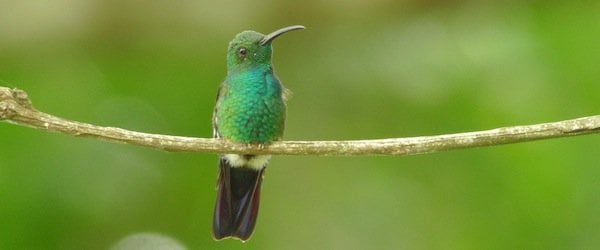 Veraguan Mango by Carlos Bethancourt
Veraguan Mango by Carlos Bethancourt
Although the Neotropical region supports fewer bird families than Africa, there are considerably more bird species here than anywhere else on earth. This means that there are some astoundingly large families of birds in Central and South America. The tanagers, antbirds, woodcreepers and hummingbirds, for example, are such massive families that it can be pretty daunting trying to get to grips with the sheer number of these birds in any one country. There are about 60 species of hummingbirds in Panama alone, one of the region’s smallest countries.
Thank goodness the bird-naming folks have given hummingbirds colorful and interesting names as this certainly helps to remember which species is which. No other family of birds has such an assortment of fanciful and hallucinogenic names: sylphs, sapphires, emeralds, coquettes, woodstars, fairies, sungems, plumeleteers and the list goes on an on. Luckily, for the most part we can vouch for the impeccable characters of these early bird-naming folks. Otherwise one could be forgiven for thinking they were all tripping on LSD.
Before our team embarked on our quest for the Veraguan Mango, we met up with my good mate Carlos Bethancourt from Canopy Lodge in Panama. Carlos has a wealth of knowledge of the birds of this region and he escorted us around the lodge gardens to target some of the more common hummingbird species.
httpvh://www.youtube.com/watch?v=5vJKjA8uXnU
The Veraguan Mango is not a hard bird to find in Panama – if you know where to look for it. The best place to find this localized species is in Pacific dry forest close to the ocean. I suggested we head down to the beach to film a little segment on the beach itself. Whilst walking down to the shoreline, Carlos reminded me that remote Panamanian beaches attract some very scantily clad members of the fairer sex. That was when I realized Aderman, my videographer, was nowhere to be found. Then I heard the screaming. I turned to see two beautiful copper-toned women running in our direction, clearly agitated. Aderman emerged from the shrubbery, a big grin on his face. “I got the footage you were looking for – 2 pairs of Veraguan Mangos!!” More grey hairs for yours truly.
When we got to the mango site I remember thinking we were going to seriously struggle to find this bird and even Carlos had his reservations about finding it easily. But it could not have been easier. Within ten minutes of reaching the dry forest we had easily located at least eight male birds, each displaying and defending its particular tree.
httpvh://www.youtube.com/watch?v=X4SbDsSsrtU
Panama used to be the only place in the world where you could find the Veraguan Mango. Until now. In the last few years, birders in Costa Rica started noticing strange mango species in the Golfito/Puntarenas region of the country. The strange birds were identified as Veraguan Mangos and they have now officially been added to the Costa Rican national bird list. It is most likely that the species is not a recent newcomer to Costa Rica but rather that it has been previously overlooked or misidentified as the similar Green-breasted Mango.
So where does this leave Panama? Unfortunately for Panama it leaves the country with one less endemic, bringing the total number of endemics to 11 (including the endemic Escudo Hummingbird found on Escudo de Veraguas Island). But Panama is probably better off than the Cleveland Cavaliers, whose chances of winning a NBA title without LeBron are pretty slim.









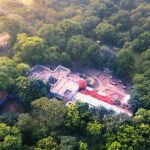
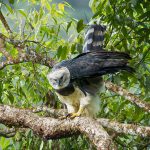
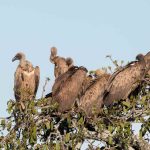
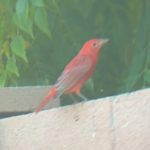
Sounds like I need to go to Panama to get that near endemic! I have looked for it near the Panamanian border in Costa Rica without success.
The ocurrence of this species in Costa Rica is not a surprise. This is not a exactly a forest species, so it has plenty of habitat to colonize to the west. Panama used to have a humid lowland forest in the western Pacific slope that literally isolated these open country species… but now it is mostly gone, so species like Brown-throated Parakeet, Savannah Hawk, Rusty-margined Flycatcher, etc.., have found their way to Costa Rica. The question is if the reverse situation occurs (we are still waiting the Melodius Blackbirds!).
That’s another excellent post, James. I’m a big fan of your work and I find that you’re striking a good balance between content and form, despite the fact that you’re clearly donning a different style from, say, David Attenborough. I heartily applaud your efforts to increase interest for the natural world as well as the attention you always give to conservation issues. Since I’m totally in love with South-Africa, I would be thrilled to see you post something about your home country, especially since I’m going there in July for work and for birding.
Many greetings,
Eildert
Thanks so much Eildert! I will definitely be doing a series of posts on my patch. Hope you have a great trip there in July!